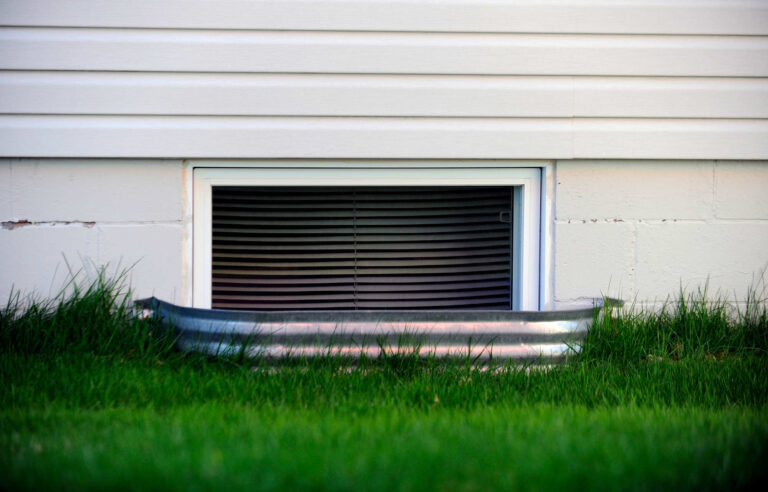Basements are one of the most versatile spaces. However, one common issue that homeowners face is poor ventilation. In this blog post, we are going to discuss the best basement ventilation solutions with proper basement finishing Colorado Springs to make sure your basement remains a healthy space. So let’s not wait any longer and jump right into it!
Understanding the Importance of Basement Ventilation
Before diving into the solutions, it’s crucial to understand why basement ventilation is so important:
1. Moisture Control: Basements are inherently prone to moisture problems due to their below-ground level position. Proper ventilation helps to control humidity levels, preventing condensation and dampness.
2. Air Quality Improvement: Poor ventilation can lead to the buildup of pollutants, allergens, and musty odors. Good ventilation ensures a constant flow of fresh air, improving overall air quality.
3. Mold and Mildew Prevention: High humidity and poor air circulation create ideal conditions for mold and mildew growth, which can cause health issues and damage to your home.
4. Structural Integrity: Excess moisture can weaken the structural integrity of your basement over time. Effective ventilation helps to keep moisture levels in check, protecting your home’s foundation.
Best Basement Ventilation Solutions
There are several effective methods to ventilate your basement. The best solution for your home will depend on factors such as the basement’s size, current moisture levels, and your budget. Here are the top basement ventilation solutions:
Mechanical Ventilation Systems
Mechanical ventilation systems are one of the most effective ways to ensure consistent airflow in your basement. There are two main types of mechanical ventilation systems:
Exhaust Fans:
Exhaust fans are a cost-effective and straightforward solution for basement ventilation. They work by expelling stale, humid air from the basement to the outside. Here’s how to optimize their use:
– Placement: Install exhaust fans at the highest point of the basement walls, as hot, humid air rises. This will help remove the warm, moist air more efficiently.
– Continuous Operation: For basements with persistent moisture problems, consider running the exhaust fan continuously to maintain consistent airflow.
– Size and Capacity: Choose an exhaust fan that is appropriately sized for your basement. A fan with insufficient capacity will not provide effective ventilation.
Supply Fans:
Supply fans work by bringing fresh air from outside into the basement. This method is often used in conjunction with exhaust fans to create balanced ventilation. Here’s how to implement supply fans effectively:
– Fresh Air Intake: Ensure the fresh air intake is located in a clean, dry area outside your home to avoid introducing pollutants into the basement.
– Balanced Ventilation: Use a combination of supply and exhaust fans to create balanced ventilation. This approach helps to regulate humidity levels and improve air quality.
Dehumidifiers
While dehumidifiers are not ventilation systems per se, they play a crucial role in maintaining optimal humidity levels in your basement. By removing excess moisture from the air, dehumidifiers help to prevent mold, mildew, and musty odors. Here’s how to use dehumidifiers effectively:
– Capacity: Choose a dehumidifier with the appropriate capacity for your basement’s size and moisture levels. Larger basements or those with significant moisture problems may require more powerful units.
– Placement: Place the dehumidifier in a central location in the basement for maximum coverage. Ensure there is adequate space around the unit for air circulation.
– Continuous Operation: In humid climates or during the rainy season, consider running the dehumidifier continuously to maintain optimal humidity levels.
Window Ventilation
If your basement has windows, you can use them to improve natural ventilation. Here are some tips for optimizing window ventilation:
– Cross Ventilation: Open windows on opposite sides of the basement to create cross ventilation. This allows fresh air to flow through the space, expelling stale air and moisture.
– Window Fans: Install window fans to enhance natural ventilation. These fans can either blow fresh air into the basement or expel humid air outside.
– Weather Considerations: Be mindful of weather conditions. Avoid opening windows during heavy rain or high humidity, as this can introduce more moisture into the basement.
Air Exchangers
Air exchangers, also known as Heat Recovery Ventilators (HRVs) or Energy Recovery Ventilators (ERVs), are advanced ventilation systems that provide balanced ventilation while recovering heat or energy. Here’s how they work and their benefits:
– Heat Recovery: HRVs transfer heat from outgoing stale air to incoming fresh air during the winter, reducing heating costs.
– Energy Recovery: ERVs transfer both heat and humidity, making them ideal for year-round use in varying climates.
– Continuous Fresh Air: Air exchangers provide a constant supply of fresh air while expelling stale, humid air, improving overall air quality and comfort.
Final Thoughts
There is no denying the fact that proper basement ventilation is essential for maintaining a healthy space. With the right kind of ventilation solutions, your basement can become a highly valuable part of your home.


